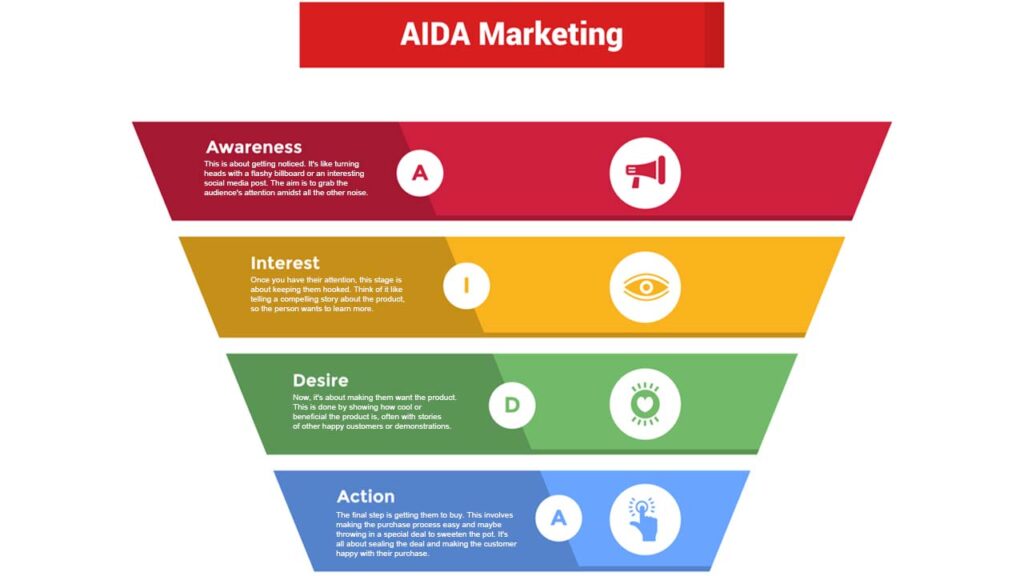Mastering Content Marketing: A Strategic Approach for Impactful Results
Brett Lewis
Content Marketing - December 12, 2023

Wondering how content marketing can propel your business forward? It’s simple: content marketing connects you with your audience through valuable, relevant content that drives engagement and business growth. Forget the fluff—this article packs a practical punch with a step-by-step strategy for leveraging content marketing effectively. You’ll discover how to define your audience, create impactful content, and distribute it for optimal reach, all with the goal of amplifying your brand and driving meaningful results.
Key Takeaways
- Content marketing is a critical strategy for building relationships, lead generation, driving sales, and increasing visibility; defining a target audience, setting clear goals, and measuring results are essential steps.
- High-quality content creation across various formats, including blog posts and videos, is crucial for engaging audiences and guiding them through the buyer’s journey, with special attention to storytelling in videos.
- A strategic approach to distribution channels is necessary to ensure content reaches the intended audience, with the use of analytics and KPIs to measure success and adjust tactics accordingly.
Exploring the Essence of Content Marketing
Content marketing extends beyond the realm of being just a buzzword. It employs valuable and relevant digital assets like text, images, and videos to foster a robust relationship with the target audience. Adopting an effective content marketing strategy can markedly bolster business revenue through sales growth and expansion. It’s about more than just making sales, though. The focus lies in building a trustworthy and credible bond with your audience, which in turn boosts your online marketing endeavors and augments visibility.
An effective content marketing strategy comprises several elements, and when executed well, it becomes a successful content marketing strategy. It begins with:
- Defining your target audience
- Setting clear and measurable goals
- Creating a content marketing campaign with relevant and valuable content
- Consistent brand messaging
- Effective distribution of content
- Continuous monitoring and optimization
By following these steps, you can ensure that your marketing efforts are paying off.
Why is all this important? Simply because content is indispensable for any business seeking to foster relationships, enhance revenue, and expand. Equipped with a clearly outlined content marketing plan, you have the capability to generate top-tier content that strikes a chord with your audience and meets your marketing goals.
Crafting a Robust Content Marketing Strategy

In the world of content marketing, having a well-defined strategy is key. It forms the bedrock of all successful marketing with content efforts, guiding the creation and distribution of content to ensure it resonates with your target audience and achieves your marketing objectives.
Setting Clear Objectives
Precision is key when setting clear objectives for your content marketing. It’s imperative to lay out definite, quantifiable goals that are in sync with your holistic marketing strategy. However, setting clear objectives extends beyond merely laying out goals. It involves grasping the needs of your target audience and defining achievable goals that will resonate with them.
Establishing precise content objectives offers a defined route to success, enables data-driven decision-making, and facilitates the measurement of the effectiveness of your endeavors. By breaking down goals into specific, attainable steps, SMART goals help maintain motivation and prioritize actions more effectively.
Specific goals influence content marketing success by enabling effective goal setting, resource allocation, and the setting of quantifiable objectives. Fundamentally, clear objectives act as the roadmap to your content marketing triumph, steering your path and maintaining your direction.
Identifying Your Audience
Recognizing your target audience is a pivotal step in every content marketing strategy. It involves analyzing the demographics, interests, and behaviors of your existing customers and potential customers. After all, without knowledge of your audience, how can you generate content that resonates?
In content marketing, a buyer persona represents a conceptual model of your brand’s typical consumer. It is instrumental in comprehending their requirements and preferences and directs the development of tailored content. So, what’s the approach to identifying your target audience? Through a mix of methods, including:
- One-on-one customer interviews
- Analyzing surveys
- Running experiments
- Compiling topics and keywords
- Examining social media and website analytics
By gaining a profound understanding of your target audience, you can craft content that resonates with them, alleviates their challenges, and guides them through the buyer’s journey. This, in turn, helps you achieve your marketing objectives and ensures your content marketing efforts are truly effective.
Content Distribution Channels
Even the most compelling content holds little value if it fails to reach the intended audience. This is where content distribution channels step in. They hold a pivotal role in content marketing, extending the reach and promotion of your content and resulting in heightened brand awareness and successful audience targeting.
Optimal content distribution channels include:
- Public relations
- Social shares and mentions
- Guest articles and roundups
- Product reviews
- Owned channels like your website
- Earned channels like social media
- Paid channels like ads and email newsletters
The key is to select the most suitable distribution channels for your content. This requires a clear understanding of your target audience and their preferred platforms, as well as consideration of how these channels align with your content marketing goals and the specific metrics used to measure success.
From social media campaigns and blog posts to video marketing, apt distribution channels can considerably amplify your content’s visibility and reach. Therefore, make wise choices to ensure your content reaches the intended audience at the perfect time.
The Art of Creating High-Quality Content

Creating top-notch content is an art form. It extends beyond merely piecing words together. It involves crafting content that strikes a chord with your audience, adds value, and propels engagement and conversions. In this process, creating content becomes a crucial aspect of your overall strategy.
Blog Posts That Resonate
Blog posts can be a powerful tool in your marketing arsenal. They have the ability to cover a wide range of topics and provide educational information to your audience, making them one of the most effective types of content for the awareness stage of the buyer’s journey.
Crafting blog posts that captivate and engage your audience entails the application of various strategies. These include:
- Incorporating bulleted and numbered lists
- Presenting case studies
- Including relevant images
- Providing valuable content for readers
- Clear identification of your target audience
- Creation of compelling headlines
- Seizing the readers’ interest with a powerful opening paragraph.
By prioritizing value delivery and readability, you can craft blog posts that not only resonate with your audience but also stimulate engagement and conversions. Indeed, a meticulously crafted blog post can serve as a potent tool for driving traffic, fostering trust, and building thought leadership.
Visual Storytelling Through Video Marketing
In the current digital era, video content reigns supreme. It possesses the ability to captivate audiences, enhance engagement, and drive conversions. However, producing effective video content extends beyond merely capturing footage. It’s about narrating a story that strikes a chord with your audience.
Content creators can enhance the effectiveness of video marketing by:
- Prioritizing the development of a compelling narrative arc
- Creating endearing and relatable characters
- Meticulously editing videos to maximize their storytelling impact
This approach seeks to guarantee that video content is captivating, valuable, and resonates with the audience.
By centering on storytelling, you can craft video content that entertains, educates, and inspires. This, in turn, can help you build a strong connection with your audience and ultimately drive engagement and conversions.
Amplifying Reach with Social Media Marketing

In the digital marketing era, social media serves as a potent tool capable of substantially amplifying the reach of your content marketing efforts. Whether it’s through organic posts or paid advertising, social media can help you engage with your audience, build relationships, and drive conversions.
Leveraging User-Generated Content
User-generated content (UGC) constitutes a potent tool in your content marketing toolkit. Not only does it aid in saving time and money in content creation, but it also generates compelling content that resonates with your audience.
UGC includes any form of content, such as:
- images
- videos
- text
- audio
that has been posted by users on online platforms. It’s a great way to engage your audience, build trust, and foster a sense of community. Plus, it’s a great way to showcase your customers’ experiences with your brand, which can help build credibility and trust.
Ranging from reviews and testimonials to social media posts and blog comments, user-generated content can offer a rich source of valuable content for your marketing efforts. So, consider utilizing it to enhance your content marketing strategy.
Navigating the Buyer’s Journey with Content

Crafting content that strikes a chord with your audience is vital. However, it’s equally significant to tailor your content to each stage of the buyer’s journey. This requires the generation of content that not only informs and engages your audience, but also steers them towards making a purchase.
Awareness Stage Strategies
The awareness stage is the first stage of the buyer’s journey. It’s the stage where potential customers are just beginning to become aware of their needs or problems and are looking for more information. The goal at this stage is to create valuable content that helps potential customers discover and trust your brand.
The most effective types of content for the awareness stage include blog posts, e-books, and infographics. These types of content are designed to educate the audience, provide valuable information, and ultimately position your brand as a thought leader in your industry.
By centering on crafting valuable content that educates and informs, you can successfully navigate potential customers through the awareness stage of the buyer’s journey. This, in consequence, can aid in building trust and credibility, which are vital for stimulating conversions and accomplishing your marketing objectives.
Interest & Consideration Stage Engagement
The interest and consideration stage is the second stage of the buyer’s journey. It’s the stage where potential customers are actively researching and evaluating different solutions to their problem. The goal at this stage is to create content that builds trust and encourages spending.
For effective engagement of buyers in the consideration stage, it’s essential to offer content that positions your product as a solution to their problem. This involves clearly defining and explaining their problem, providing content that highlights potential solutions, and showcasing why your solution is the best choice.
By concentrating on crafting content that presents your product or service as the best solution, you can effectively steer potential customers through the consideration stage of the buyer’s journey. This, in turn, can help you build trust, foster loyalty, and ultimately drive conversions.
Enhancing Visibility with SEO and Paid Media

Search engine optimization (SEO) and paid media stand as two potent tools that can markedly augment the visibility of your content marketing efforts in search engines. By integrating these two strategies, you can broaden your reach, stimulate more organic traffic, and ultimately enhance your results.
SEO focuses on optimizing your content to enhance its visibility in search engine results, thereby generating organic traffic and establishing credibility and influence with your intended audience. This involves:
- Selecting appropriate keywords
- Optimizing your website
- Generating valuable content
- Establishing links and authority
Conversely, paid media can boost the visibility of your content marketing efforts by:
- Extending reach
- Accelerating the pace and scope of audience outreach
- Enhancing organic and paid click-through rates
- Providing instant access to leads
- Reaching a broader audience
The key is to find the right balance between SEO and paid media to maximize your content marketing efforts.
Measuring Success: Analytics and KPIs
It’s vital to gauge the success of your marketing efforts. This requires monitoring your performance using analytics tools and key performance indicators (KPIs) to confirm the achievement of your marketing objectives and pinpoint areas for enhancement.
In content marketing, key performance indicators (KPIs) include:
- Elevated social media interest
- Improved brand visibility
- Better SEO ranking
- Heightened engagement
Monitoring these KPIs allows you to gauge the effectiveness of your content marketing efforts and make data-driven decisions to refine your strategy.
Google Analytics provides diverse methods to measure content marketing success, including:
- Tracking page views
- Tracking page views by source and title
- Monitoring referral traffic
- Defining goals
- Conducting audience analysis
- Identifying target keywords
- Making data-driven decisions for content marketing strategy
By leveraging these tools, you can gain valuable insights into your audience, measure the success of your content efforts, identify content gaps, and make data-driven decisions to improve the effectiveness of your content.
Building a Content Calendar for Consistency
A content calendar, alternatively known as an editorial calendar, serves as a valuable resource for any content marketer. It provides a visual overview of your content strategy, helps keep your team organized, and ensures you maintain a consistent publishing schedule.
A content calendar can provide several benefits, including maintaining organization and direction, aiding brainstorming, and ensuring consistency in content creation and publication. Regardless of whether you’re a solo content marketer or part of a larger team, a content calendar can streamline your processes, heighten efficiency, and guarantee timely delivery of high-quality content.
To craft an effective content calendar, it’s significant to identify the components to be included in the calendar, like season, strategy, campaign, and so on. It’s also crucial to categorize content based on type, author, publication date, channel, and other relevant factors. Finally, assessing social media channels and conducting an audit of social platforms can ensure your content is delivered to the right audience at the opportune time.
Integrating Email Marketing in Content Efforts
Email marketing is a potent tool capable of significantly augmenting your content marketing efforts. By incorporating email marketing into your content marketing strategies, you can nurture leads, drive conversions, and ultimately boost your results.
Developing lead capture content, providing exclusive email content, segmenting and personalizing email content, incorporating educational content, and attaining a profound understanding of your audience are suggested best practices for weaving email marketing into a content strategy. By focusing on providing valuable content that resonates with your audience, you can build trust, foster loyalty, and ultimately drive conversions.
Integrating email marketing into a content marketing strategy offers benefits like:
- Broadened reach
- Accurate communication targeting
- Lead generation
- The ability to nurture leads
So, consider utilizing it to enhance your content marketing strategy.
Pioneering with Podcasts and Audio Content
Podcasting represents an expanding trend in content marketing. It provides a unique avenue to engage with your audience, deliver valuable content, and cultivate audience loyalty and retention.
In content marketing, podcasting constitutes a versatile and cost-effective strategy that facilitates the sharing of expertise, opinions, and insights with a broader audience, thus bolstering brand credibility and promoting engagement.
Podcasting can boost audience loyalty and retention through strategies like:
- Customer connection
- Authority establishment
- Building robust bonds with listeners
- Attention capture
- Humanizing a business
- Enhancing visibility
By centering on crafting valuable content that strikes a chord with your audience, you can effectively steer potential customers through the buyer’s journey. This, in turn, can help you build trust, foster loyalty, and ultimately drive conversions.
Future Trends in Content Marketing
The content marketing landscape is in constant flux, with emerging trends and technologies moulding the future of this field. Ranging from artificial intelligence (AI) to virtual reality (VR), the future of content marketing holds promise for an exciting and transformative journey.
AI is shaping the future of content marketing by providing data-driven approaches, personalization, and a focus on high-quality content. Meanwhile, virtual reality has the capability to transform content marketing through immersive and interactive experiences. It enables brands to engage audiences, present products realistically, virtually transport users, and deliver compelling storytelling.
By staying abreast with these emerging trends and technologies, you can stay ahead of the curve, ensuring your content marketing efforts remain potent and pertinent. So, are you ready to embrace the future of content marketing?
Real-Life Examples of Content Marketing Triumphs
Real-life content marketing examples of triumphant content marketing campaigns can offer valuable insights and lessons for your own content marketing endeavors. From the technology industry to the food and beverage industry, there are countless examples of companies that have leveraged content marketing to achieve remarkable results.
Spotify Wrapped Playlists represents one of the most successful content marketing campaigns of the music streaming app. Meanwhile, companies like HubSpot and OptinMonster provide inspirational examples of content marketing to learn from. In the food and beverage industry, a strategic implementation of content marketing is crucial for differentiation. This involves leveraging multiple channels to promote products, drive lead generation, and boost sales.
By analyzing these successful content marketing campaigns, you can acquire insights into effective strategies and techniques applicable to your own content marketing efforts. So, are you ready to learn from the best in the business?
Maximizing Impact with Paid Ads
Paid advertising stands as a potent tool capable of considerably enhancing the results of your content marketing efforts. By weaving paid advertising into your content marketing strategies, you can broaden your reach, stimulate more organic traffic, and ultimately enhance your results.
Paid media serves a pivotal role in bolstering the visibility of content marketing efforts by:
- Extending reach
- Accelerating the pace and scope of audience outreach
- Enhancing organic and paid click-through rates
- Providing instant access to leads
- Reaching a broader audience
The key is to find the right balance between organic and paid strategies to maximize your content marketing efforts.
From paid search and social media ads to video ads and native ads, there are a variety of paid advertising options that you can leverage to enhance your content marketing efforts. By strategically integrating these paid advertising channels with your content marketing strategies, you can significantly boost your reach, engagement, and conversions.
Summary
Mastering content marketing is no easy feat, but with the right strategies and techniques, it’s definitely achievable. From defining clear objectives and identifying your target audience to creating high-quality content and leveraging the power of social media, there are countless ways to enhance your content marketing efforts.
But remember, content marketing is not a one-size-fits-all solution. It’s about finding the right mix of strategies that works for your business and audience. So, don’t be afraid to experiment, learn from your mistakes, and continuously optimize your content marketing strategies. After all, the key to successful content marketing is constant learning and adaptation.
Frequently Asked Questions
What are the 5 C’s of content marketing?
The 5 C’s of content marketing are clarity, conciseness, compelling, credibility, and call to action. These elements are crucial for creating effective content.
What does a content marketer do?
A content marketer is responsible for planning, creating, and distributing valuable content on behalf of a business to attract and engage potential customers through various mediums such as print, visual, and video content. Their aim is to drive brand awareness and attract leads.
What are the 7 steps of content marketing?
Developing a content marketing strategy involves 7 steps.
What is content marketing management?
Content marketing management involves creating and sharing valuable content to attract and retain a specific audience, ultimately driving profitable customer action. It includes using various media formats to establish expertise and promote brand awareness, keeping the business top of mind for potential customers.
What is the essence of content marketing?
The essence of marketing with content is to create valuable and relevant digital assets to build a strong relationship with the audience, contributing to revenue growth and establishing credibility. This is achieved through the use of text, images, and videos, and plays a crucial role in business success.
